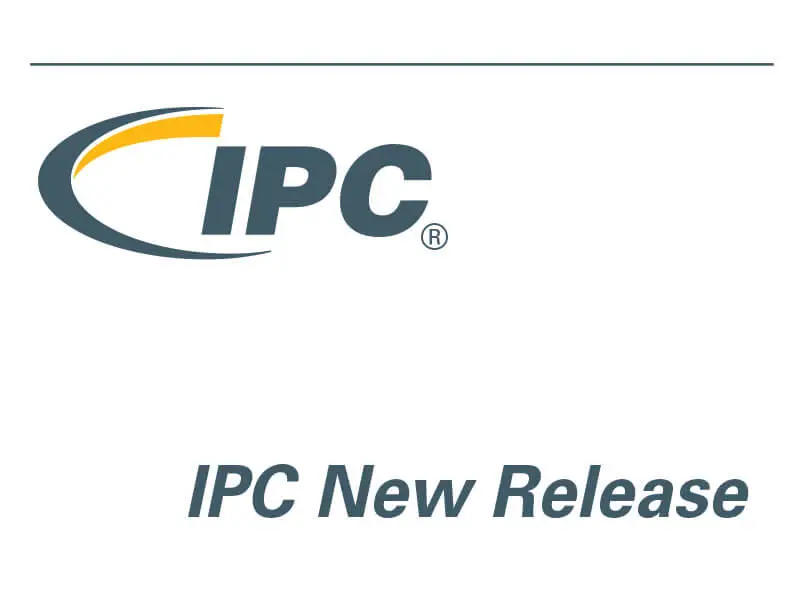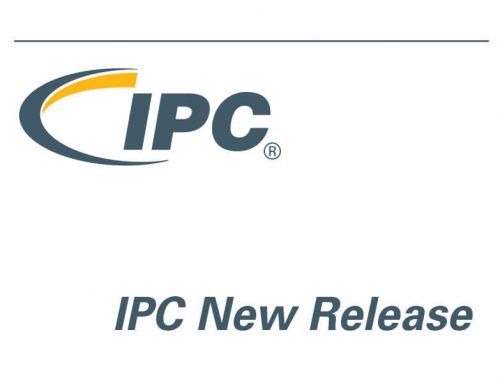IPC-2591 version 1.1 provides updates to several CFX messages since the original IPC-2591 version release. IPC-2591 standard establishes the requirements for the omni-directional exchange of information between manufacturing processes and associated host systems for assembly manufacturing. IPC-2591 standard applies to communication between all executable processes in the manufacture of printed board assemblies, automated, semi-automated and manual, and is applicable to related mechanical assembly and transactional processes.
Visit https://cfx.ipc.org/ for helpful resources and links to software development tools for implementing IPC CFX.
IPC-2591-Version 1.1 was developed by the Connected Factory Initiative Subcommittee (2-17) and the Connected Factory Initiative Subcommittee – China (2-17CN) of the Electronic Product Data Description Committee (2-10) of IPC
Number of Pages: 44 | Release Date: 12/1/2019 | ISBN: 978-1-951577-05-6
Available at IPC: https://shop.ipc.org/IPC-2591-Version-1-1-English-P
1 Scope
This standard establishes the requirements for the omnidirectional exchange of information between manufacturing processes and associated host systems for assembly manufacturing. This standard applies to communication between all executable processes in the manufacture of printed board assemblies – automated, semiautomated and manual – and is applicable to related mechanical assembly and transactional processes.1.1 Purpose
With the growth and acceptance of digital modeling and practices in manufacturing, the lack of a holistic Industrial Internet of Things (IIoT) standard for the transfer of information between machines, systems and processes has become a severe limitation to the growth of digitization and computerization in the electronics manufacturing industry, inhibiting technology innovations such as Industry 4.0 and Smart Factories being available to all companies in the industry, regardless of size, sector and location.This Connected Factory Exchange (CFX) standard provides a true ‘‘plug and play’’ Internet of Things (IoT) communication environment throughout manufacturing, where all equipment, manufacturing processes and transactional stations can communicate with each other without the need for the development and use of bespoke interfaces. CFX-enabled equipment and solutions from different vendors work seamlessly together.
There are many types of users of this CFX standard, including equipment vendors, solution providers, in-house information technology (IT) groups, etc. The many types of data included in CFX are used in different ways depending on the application; for example, closed-loop feedback systems, live production dashboards, traceability (IPC-1782), manufacturing execution systems (MES) control, lean supply chain management, active quality management, production control, etc.
As CFX data is fully omnidirectional, any CFX endpoint connection can consume data as well as create it. As an illustration, consider the scenario in which a single machine from a certain vendor is connected in-line with other machines from different vendors. CFX messages are sent from the single machine to other machines in the line, and to host systems such as MES. The single machine can also receive CFX messages from all other machines in the line, as well as from the host systems in order to optimize the machine operation and enable the vendor of the machines to create added-value functionality, such as to support machine-specific Industry 4.0. In this way, a smart, digital, Industry 4.0 factory will be comprised of many different Industry 4.0 computerization applications, each of which can be provided by different suppliers, at the machine, line, site and even enterprise levels, all working together, sharing data seamlessly through CFX.
This CFX standard supports the concept of big data by including data of different types from across the factory, including performance, materials, resources, users, quality events, product tracking, etc., all of which can be combined to create a bigdata environment. CFX, therefore, provides many kinds of added value opportunities to the whole manufacturing operation, including, for example, improving operational efficiency and productivity, quality and reliability, agility and responsiveness. This CFX standard helps organizations ensure that end users/consumers will receive products and services that meet or exceed their expectations and in the timeliest and most economically viable method.
Preview the IPC-2591-Version 1.1 table of contents .pdf file.


